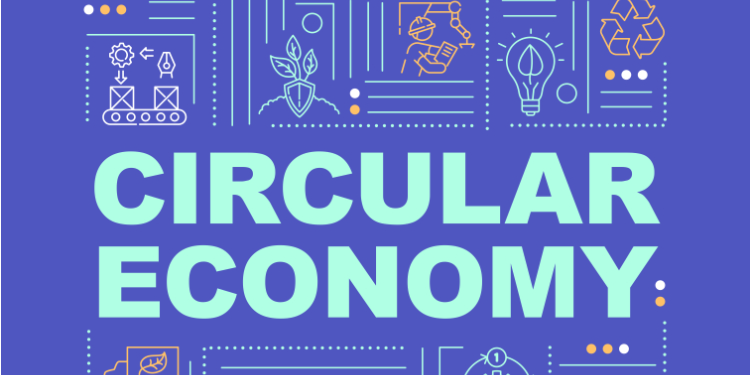Water — The Main Ingredient
At various points in my career, I have heard the argument that freshwater aquaculture makes more sen...

At first glance,consideration of the concept of a circular economy might be a case of “everything old is new again.” Simply, a circular economy is one where waste is used as a resource. In aquaculture, particularly at the farm or landscape level, there are numerous examples of circularity. There are too many examples to cite but a few will suffice. Traditional integrated agriculture-aquaculture systems as practiced in Asia take advantage of synergies among farm components to efficiently recycle and reuse nutrients. The mulberry dike-fish pond systems of the Zhejiang Province in China — where the landscape is honeycombed with fish ponds and dikes — are more than 2500 years old and has been designated as a Globally Important Agricultural Heritage System by the FAO. Pond water and fertile muds are placed on dikes used to grow mulberry to feed to silkworms and the silkworm waste is used as a pond input. What is now called integrated multitrophic aquaculture is practiced in vast areas of coastal China. In Sanggou Bay, China, a coastal area of around 100 km2 produces more than 240,000 t of seafood from more than 30 fed and extractive species that are farmed. The East Kolkata Wetlands Ramsar site in India includes nearly 4000 ha of wastewater-fed aquaculture ponds that produce around 18,000 t of carps annually.
In China, where integrated production systems that relied on production synergies to function were developed, these systems persist but have not expanded appreciably. Fish producers in China shifted to pellet-fed systems several decades ago and haven’t looked back. Wastewater-fed aquaculture and integrated systems are in decline generally.
In fed aquaculture, given that feed represents 50 percent or more of production costs and that 60-80 percent of nutrients in feed are released to the production environment as waste, it seems that there should be a strong economic incentive to recover and reuse those nutrients. For various reasons, that has not been the case. In ponds, nutrients encourage luxurious algae growth but recovering nutrients from algae thus far is not practical. In open, flow-through systems like net pens and raceways, nutrients are simply released to the commons and the costs to society are externalized. Recovering wastes produced in aquaculture is complex and comes with added costs.
Similar to the related concept of sustainability, there are no consensus definitions of what constitutes a circular economy. Like sustainability, which can be defined more easily in terms of what is not sustainable, the circular economy is defined in terms of its opposite — a linear economy. The idea is to replace the current linear economy of “take, make, consume, dispose” and replace with a circular model based on the 4Rs strategy of “reduce, reuse, recycle, recover.” This allows more value to be extracted from resources. The Ellen MacArthur Foundation characterizes a circular economy as “one that is restorative and regenerative by design and aims to keep products, components, and materials at their highest utility and value at all times, distinguishing between technical and biological cycles.” There are three principles embedded in this definition: design out waste and pollution, keep products and materials in use, and regenerate natural systems.
Decisions made in the design phase are critical because once a designed system is constructed, the implications for resource use and emissions are largely locked in. It is encouraging to see relatively recent systems designed on the basis of ecological or regenerative principles, like IMTA, biofloc, aquaponics and aquamimicry. New recirculating and intensive shrimp farming models allow waste solids recovery and further use for biogas generation. However, most of these systems have yet to develop to the point where they are making meaningful contributions to global aquaculture production.
Looking further downstream in the value chain, there are ample opportunities to use waste generated during processing. Processing plant wastes are now routinely rendered and incorporated into aquafeeds for other species or for pets. Chitin and chitosan from shrimp shell waste can be extracted and used as a thickener in food processing, as biodegradable plastic, and in pharmaceuticals. Tilapia skins are used to make leather products and to treat burn victims. Bivalve mollusk shells are being recovered from processors and restaurants and returned to bay bottoms to mitigate local acidification and provide substrate for spat attachment.
Looking beyond aquaculture, the wastes from other economic sectors are being used as resources in aquaculture. Various organic wastes are being used to produce black soldier fly larvae that are processed into a fishmeal alternative. For every tonne of organic wastes, about 50 kg of insect protein and 200 kg of compost can be recovered. Veramaris is a company producing the omega-3-rich protist Schizochytrium limacinum commercially through fermentation and claims that it will be able to meet 15 percent of the global demand for fish oil by the salmon industry. Lingocellulosic biomass like wood waste or sugar cane bagasse can be hydrolyzed enzymatically and then fermented to produce a product with a nutritional profile similar to that of fishmeal. Yeasts produced using a range of feedstocks are being produced by ADM and Alltech.
Historically, aquaculture has done well in embracing the central tenets of the circular economy concept. However, there is always room for improvement. At the farm level, managers should explore and evaluate ways to improve resource use efficiency and creative ways to reduce, reuse and recover wastes of all kinds. At the broader regional or value-chain level, ways that wastes from aquaculture can be used in other economic sectors, and vice versa, should be considered. At the global level, aquaculture is a relatively small sector in terms of emissions. Nonetheless, new creative system designs, although more complex to manage, offer the potential to produce valuable co-products that enhance the profitability and sustainability of aquaculture.
— John A. Hargreaves, Editor-in-Chief